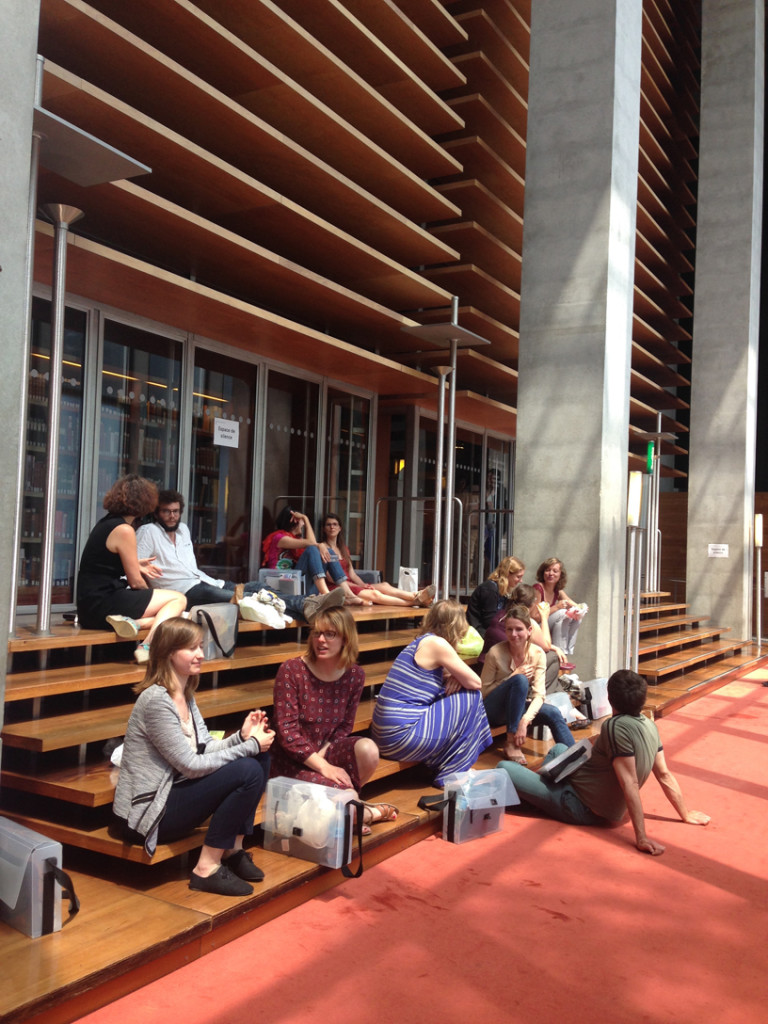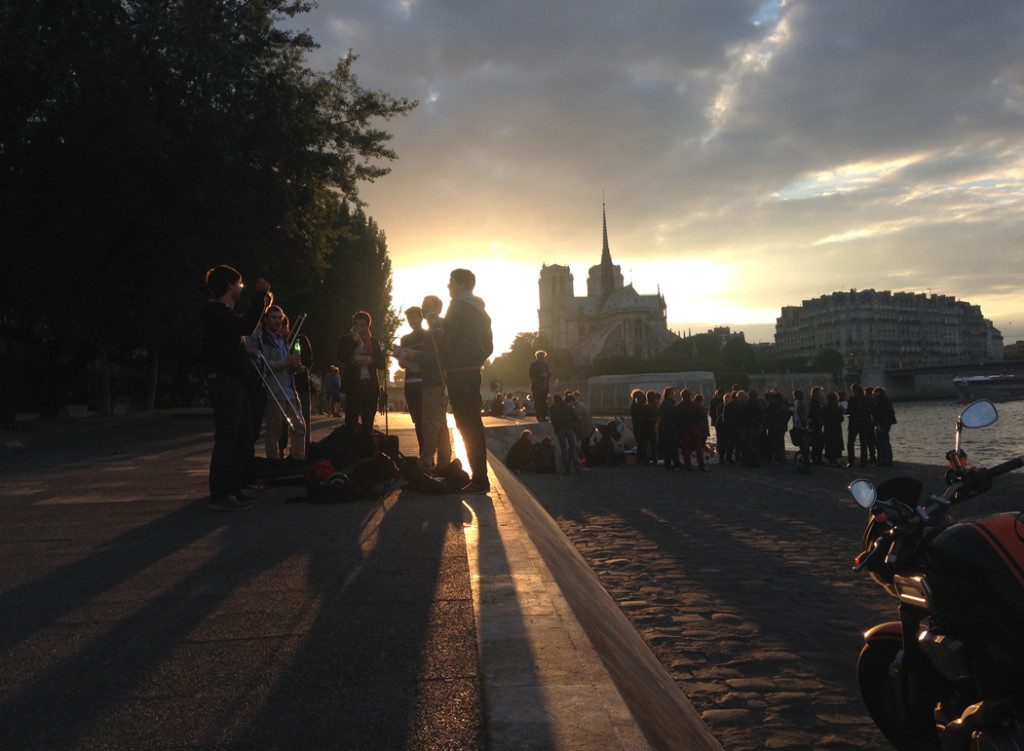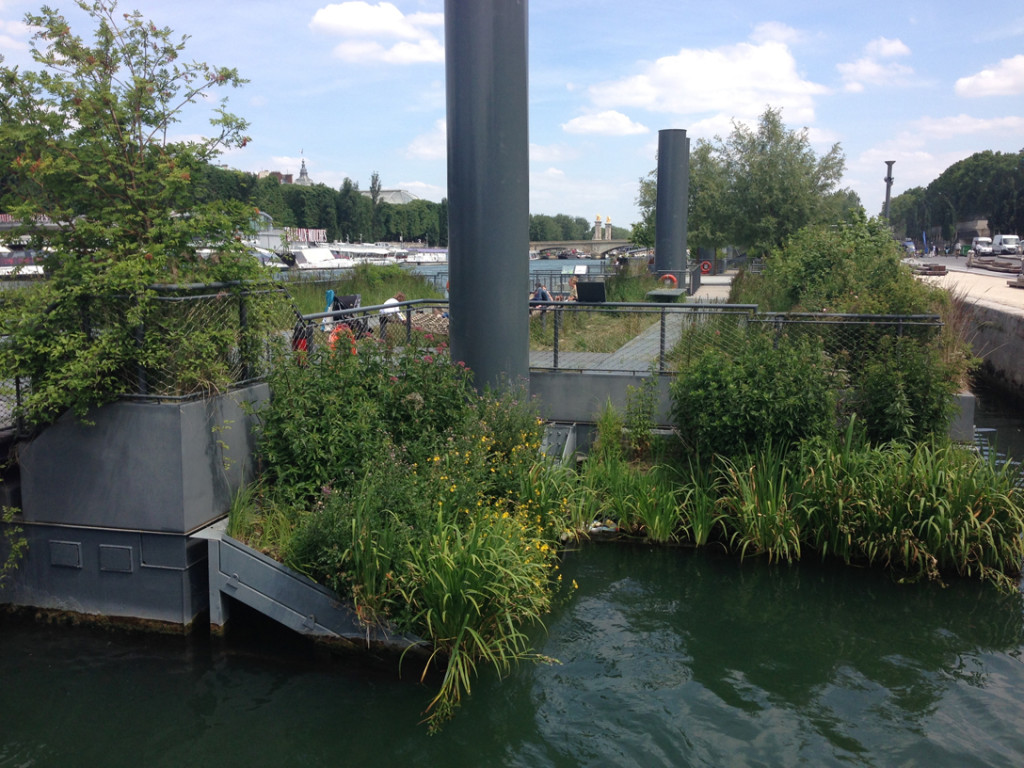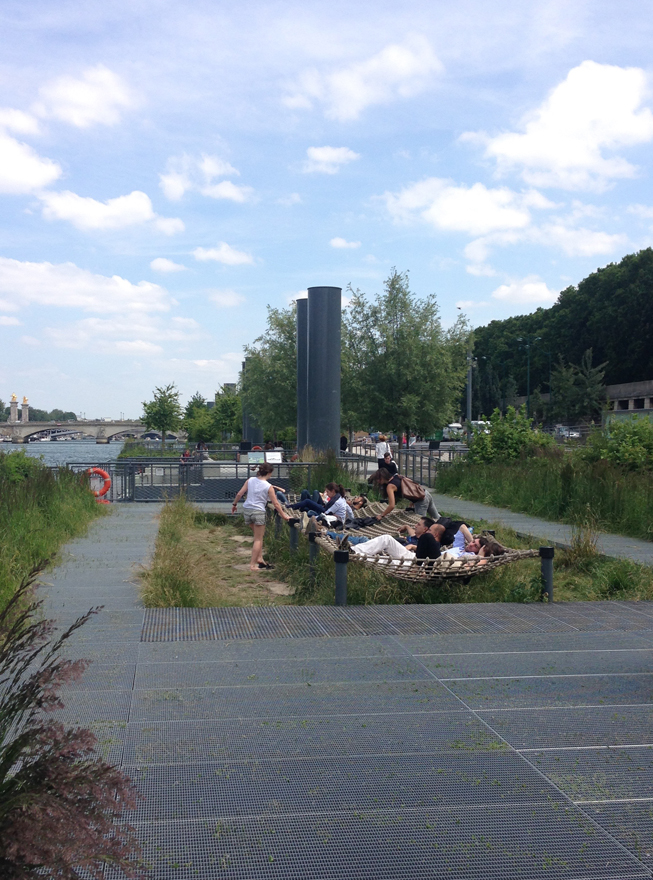An old tradition renews the relationship existing between Paris and her inhabitants: the social and public use of lawns, gardens, stairways and riverfronts to hold, with extreme nonchalance, the ceremony of picnicking.
Pique-niquer (to picnic), is a French verb made up of two words: piquer (to pick, to nick, to nibble) and nique (small little thing seemingly of no value). The City has generously dedicated many public areas to picnicking. During sunny days, fully equipped couples, groups and families flow into picnic zones to have lunch or even a quick bite, luxuriously enjoying the most suggestive urban sightseeing of Paris like the Jardins des Tuileries, in front of the Louvres Museum, or the Champs de Mars, next to the Eiffel Tower. Balm for soul is picnicking laying on the soft lawns of Jardin du Luxembourg (fig. 1), or under the shade offered by horse chestnut trees in Place des Vosges (fig. 2), or even amongst the hills and lakes of Parc des Buttes Chaumont (fig. 3).
Not only “paintings” of the historical Paris are animated by the picnic crowd. For example, the modern neighborhood of Parc André Citroën, from the homonymous ZAC (fig. 4), also offers suggestive green area, as well as the three big gardens of ZAC Bercy, Jardin romantique, the Parterres or les Prairies (Fig 5). Likewise, Parc Clichy-Batignolles – Martin Luther King, born as result of the rehabilitation plan of Batignolles railway station started in 2014, is one of the favorite places of picnic lovers, despite of still being under construction (fig 6). The Jardine d’Eole and Jardin Rosa Luxemburg are located in the eco-neighborhood Pajol, where the biggest urban photovoltaic power plant of France was constructed on top of a garden enriched by fountains and converted in a multi-cultural center with libraries, ballrooms, bar and restaurants (fig 7).
Finally, in 2014 the shadow of the Louis Vuitton Foundation, the last Parisian creation by Frank Gehry, opened its brand new exhibition halls inside the Jardin d’Acclimatation of Bois de Boulogne (fig. 8).
Jardin du Luxembourg. (fig.1)
Place des Vosges. (fig.2)
 Parc des Buttes Chaumont. (fig.3)
Parc des Buttes Chaumont. (fig.3)
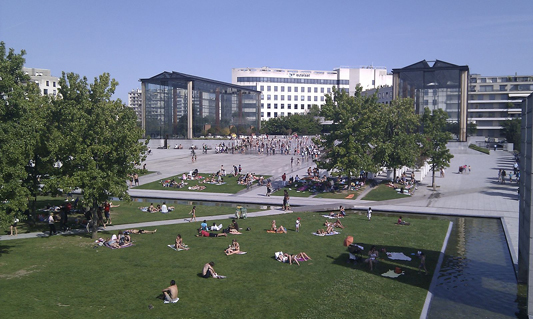 Parc André Citroën. (fig.4)
Parc André Citroën. (fig.4)
 Parc Bercy. (fig.5)
Parc Martin Luther King. (fig.6)
Parc Bercy. (fig.5)
Parc Martin Luther King. (fig.6)
Jardin Rosa Luxemburg. (fig.7) Louis Vuitton Foundation. (fig.8)
Picnic is not organized exclusively for sunny Sunday lunches: every single sunbeam that filters through the clouds overcasting the City is celebrated by fleeting tablecloths and nibbles. But action takes place above all in the evenings, when never-ending lines of picnickers crouch down on the quays of Saint-Martin Canal or the river Seine. Right there, every Parisian (native, of adoption or just passersby), loses sense of time while catching with his eyes the sun slowly setting down (figg 9-10).
[one_half_last]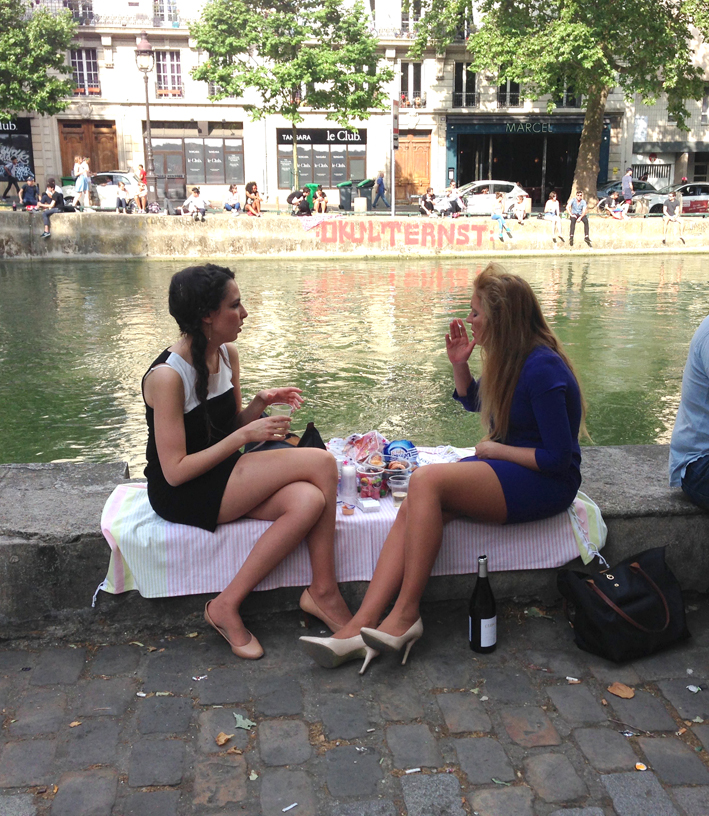 [/one_half_last]
[/one_half_last]
The everlasting summer twilight is celebrated with a triumph of drinks and food of any kind, cheerfully arranged on colorful tablecloths and blankets. Commensals’ nationality, age, religion and social rank is unmasked by these quite distinctive banquets. Any difference however is erased by the sharing of a common ritual, unpretentiously celebrated in a landscape that only Paris can offer and where everything and everybody lays on the floor.
Picnicking has turned into a very common habit in the French capital and it is so adored by her inhabitants that the City Council has issued specific regulations to discipline its practice. For example, areas have been reserved to picnic even in the most prestigious institutions such as the National Library of France François Mitterand (figg. 11-12), where picnicking is allowed “oui, mais pas n’importe où” (“yes, but not anywhere”).
[one_half_last]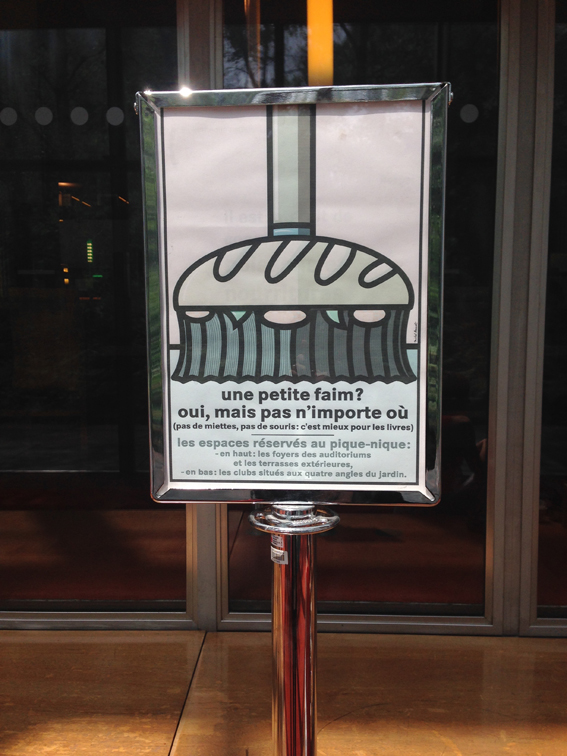 [/one_half_last]
[/one_half_last]
The most favorite places are with no doubt the quays of river Seine in the heart of City Center, where the most representative historical buildings stand (Notre-Dame, the Eiffel Tower, the Louvre museum, the Hôtel-de-Ville, etc.)(fig 13).
Apses of Notre Dame views from Seine. (fig.13)
Like all rivers of continental cities, the Seine has adopted the most ancient settlement within her fertile meanders and has fostered its development by supporting transport and communication, by serving as mean of supply and sewerage.
Political and religious institutions have settled their representative buildings along the river, likewise industries, during the industrial revolution, have used some stretches of river Seine to enter and exit the City exploiting their strategic location. Between 1961 and 1967, the Seine had to sacrifice her river banks in the heart of historical center to the realization of streets built to lighten urban vehicle traffic. As result, citizens were deprived of open access to their river.
From the second half of XX Century, following the industrial delocalization, ex-industrial areas became of major interest for the realization of projects of urban redesign and requalification, examples of which are the aforementioned ZAC Citroën e Bercy. In 1991 the river Seine became UNESCO world heritage site, event that triggered new ideas and projects on river banks recover. In 2002 the project Paris-plage was launched, consisting in 3,5km of sandy beach accessible to amenities like umbrellas and sunbeds and available in the months of July and August, extending along the Seine right bank riverside down to the Hôtel-de-Ville. In 2008, the project Berges de la Seine was proposed to revalue the left bank riverside, a project that was sponsored by Major Delanoe and launched in summer of 2013.
The project Les Berges de la Seine was planned by architect Franklin Azzi and landscape gardener Jean Christophe Chobet. As result, 2,3km of quay between the D’Orsay Museum and Pont de L’Alma were rendered accessible to public. Simple, economic and readily available materials like wood, paint, ropes, plants were used; the Seine was given back to her inhabitants, turning again into a focal hub where life, aggregation, sport, culture and relax took place.
Keyword of this eco-sustainable recycling plan was creativity (figg. 14-17): carpentry boards were transformed into seats, floating rafts hosted theme gardens, fruit gardens, urban vegetable gardens. Ropes were knotted, twisted and turned to create hammocks; wooden beams were turned into gym equipments; on the walls and on the streets, paintbrushes created board games, running tracks, road signs; river banks counterscarp walls were covered with slate boards dedicated to writers, while climbing walls were given to city climbers. Containers were converted in showcases, for sale of clothes and nick-nacks, or into shelters, meeting rooms, party halls and – ça va sans dire (that goes without saying) – picnic areas!
Les Berges de la Seine. (fig.14-15)
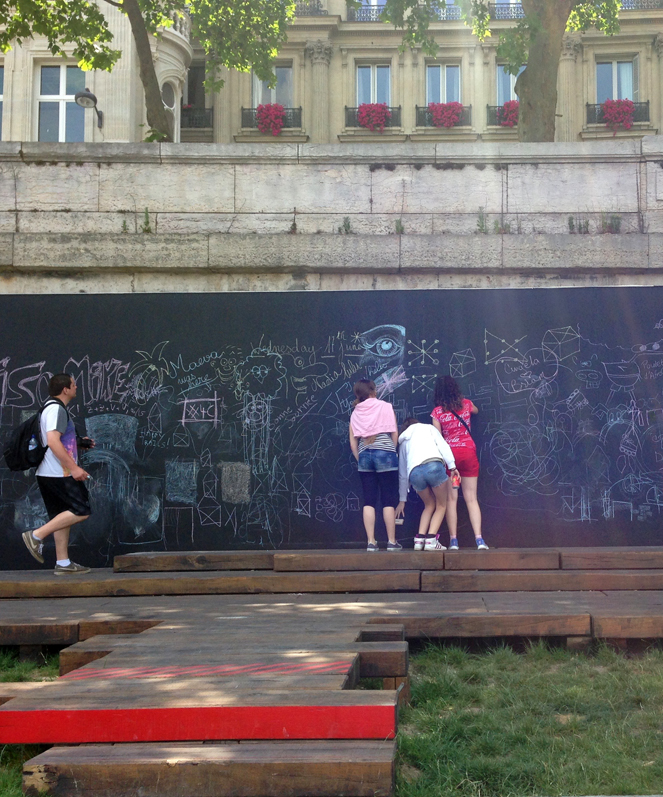
 Les Berges de la Seine. (fig.16-17)
Les Berges de la Seine. (fig.16-17)
English Translation by Ester Badami
Head Image: Apses of Notre Dame views from Seine.
Pique-niquer à Paris
Una antica tradizione rinnova il rapporto tra Parigi e i suoi abitanti: l’uso sociale e pubblico di prati, giardini, scalinate, sponde dei canali e lungofiume per consumare, con estrema nonchalance, il rito del pic-nic.
Pique-niquer è un verbo francese che abbina piquer (prendere, rubacchiare, spilluzzicare) con nique (piccola cosa di poco valore), e la città gli tributa generosamente i suoi spazi pubblici dove, nelle giornate di sole, si riversano coppie, gruppi, famiglie, attrezzati di tutto punto per godere di un pranzo o soltanto di uno spuntino all’aperto, immersi tra i panorami urbani più suggestivi di Parigi nei Jardins des Tuileries di fronte al Louvre, sugli Champs de Mars davanti la Tour Eiffel, sui prati del Jardin du Luxembourg (fig. 1), all’ombra degli ippocastani di Place des Vosges (fig. 2) o tra le colline e gli specchi d’acqua del Parc des Buttes Chaumont (fig. 3).
Non soltanto i quadri della Parigi storica sono animati dal popolo del pic-nic: offrono spazi altrettanto suggestivi anche i prati del Parc André Citroën dell’omonima ZAC (fig. 4); o il Jardin romantique, il Parterres o les Prairies, i tre grandi giardini della ZAC Bercy (fig. 5); o il Parc Clichy-Batignolles – Martin Luther King, parte del progetto di rinnovamento urbano dell’area ferroviaria di Batignolles avviato nel 2014 e tuttora in cantiere, ma già frequentatissimo dagli amanti del sole e dell’aria aperta (fig. 6); o il Jardine d’Eole e il Jardin Rosa Luxemburg dell’ecoquartiere Pajol, con il più grande impianto fotovoltaico urbano di Francia montato sopra un giardino con vasche e attorniato da servizi culturali e per il loisir (biblioteche, sale di danza, bar, ristoranti) (fig. 7); o ancora l’ombra della Fondazione Louis Vuitton, l’ultima realizzazione parigina di Frank Gehry, che ha aperto i suoi nuovissimi spazi museali nel 2014 all’interno del Jardin d’Acclimatation del Bois de Boulogne (fig. 8).
Jardin du Luxembourg. (fig.1)
Place des Vosges. (fig.2)Parc des Buttes Chaumont. (fig.3) Parc André Citroën. (fig.4) Parc Bercy. (fig.5)
Parc Martin Luther King. (fig.6)
Jardin Rosa Luxemburg. (fig.7)
Louis Vuitton Foundation. (fig.8)
Il pic-nic non si consuma esclusivamente in occasione del pranzo delle domeniche soleggiate: ogni raggio di sole che fende le nuvole della capitale viene celebrato con rapide e fugaci tovaglie e vettovaglie; ma è soprattutto la sera, quando i Parigini (di nascita, d’adozione o solo di passaggio) trattengono con i loro occhi il lento tramontare del sole, che file ininterrotte di appassionati del pic-nic si assiepano lungo le sponde della Senna o del Canale Saint-Martin (figg. 9, 10).
Saint-Martin Canal. (fig.9-10)
A rendere omaggio ai lunghissimi crepuscoli estivi, trionfano sulle tovaglie o sulle coperte colorate bevande e libagioni di tutti i tipi, dalle quali si può facilmente indovinare la nazionalità, l’età, la religione e il ceto sociale dei commensali; ma tutte le differenze si annullano nella condivisione di un rito consumato senza pretese, all’aria aperta offerta da Parigi, tutto e tutti appoggiati per terra.
La pratica del pic-nic è talmente diffusa nella capitale francese e così amata dai cittadini che il Comune di Parigi ha emanato appositi regolamenti per disciplinarne l’uso, mentre spazi riservati sono stati previsti persino presso le istituzioni più prestigiose come la Biblioteca Nazionale di Francia François Mitterand (figg. 11-12), dove il pic-nic è permesso “oui, mais pas n’importe où” (si, ma non dappertutto!).
Biblioteca Nazionale di Francia François Mitterand. (fig.11-12)
Tra i luoghi più amati sono senz’altro le rive della Senna al centro della città, dove prospettano gli edifici storici più rappresentativi (Notre-Dame, Tour Eiffel, Louvre, Hôtel-de-Ville, etc.) (fig. 13).
Absidi di Notre-Dame viste dalla Senna. (fig.13)
Come tutti i grandi fiumi delle città continentali, la Senna ha accolto il più antico insediamento tra le sue fertili anse e ne ha seguito lo sviluppo fungendo da via di comunicazione e trasporto, da mezzo di approvvigionamento e smaltimento idrico, da risorsa alimentare. I poteri politico e religioso hanno attestato le loro sedi di rappresentanza lungo il fiume, come anche le fabbriche, in epoca industriale, hanno utilizzato i tratti della Senna in ingresso e in uscita dalla città per la loro ottimale localizzazione; per fluidificare il traffico veicolare, tra il 1961 e il 1967, la Senna ha dovuto sacrificare le sue sponde in pieno centro storico per la realizzazione di strade a scorrimento veloce che, nei fatti, hanno defraudato i cittadini dell’accessibilità al loro fiume.
Dalla seconda metà del XX secolo, con il processo di delocalizzazione industriale, le aree delle fabbriche dismesse sono state oggetto di importanti progetti di ridisegno e riqualificazione urbana, tra cui le già ricordate ZAC Citroën e Bercy. Mentre nel 1991 la Senna veniva inserita nella lista del patrimonio dell’umanità dell’UNESCO, si cominciava a ragionare su un progetto di riconquista del fiume: nel 2002 viene lanciato il progetto Paris-plage, 3,5 km di spiaggia attrezzata, con tanto di sabbia e ombrelloni, montata tra luglio e agosto sulla riva destra della Senna fino all’Hôtel-de-Ville, seguito dal progetto Berges de la Seine, concepito nel 2008 per la riva sinistra sulla spinta del sindaco Delanoe e che ha visto la sua prima edizione nell’estate 2013.
Les Berges de la Seine, progetto dell’architetto Franklin Azzi e del paesaggista Jean Christophe Chobet, aprono finalmente al pubblico 2,3 km di riva attrezzata tra il Musée D’Orsay e Pont de l’Alma, dove, con l’utilizzo di materiali semplici, economici e facilmente reperibili come il legno, la vernice, le corde, le piante, la Senna ritorna luogo centrale di vita, aggregazione, sport, cultura e relax.
La cifra distintiva dell’operazione è la creatività (figg. 14-17): assi da carpenteria sono diventate sedute; zattere galleggianti ospitano giardini a tema, frutteti, orti urbani; corde hanno fatto i loro giri e i loro nodi per prendere la forma di amache; travi di legno si sono montate tra loro per diventare attrezzi ginnici; pennellate di vernice per terra e sui muri hanno dato vita a giochi di società, piste di corsa, segnaletica di orientamento; sui muri di controscarpa delle rive trovano posto lastre di ardesia per i writers e pareti da arrampicata per il cityclimb; containers si sono strasformati in vetrine per esporre oggetti e vestiti in vendita, ripari per dormire, sale per meeting e conferenze, location per party e – ça va sans dire – spazi a disposizione per il pic-nic!
Les Berges de la Seine. (fig.14-15) Les Berges de la Seine. (fig.16-17)
Head Image: Absidi di Notre-Dame viste dalla Senna.
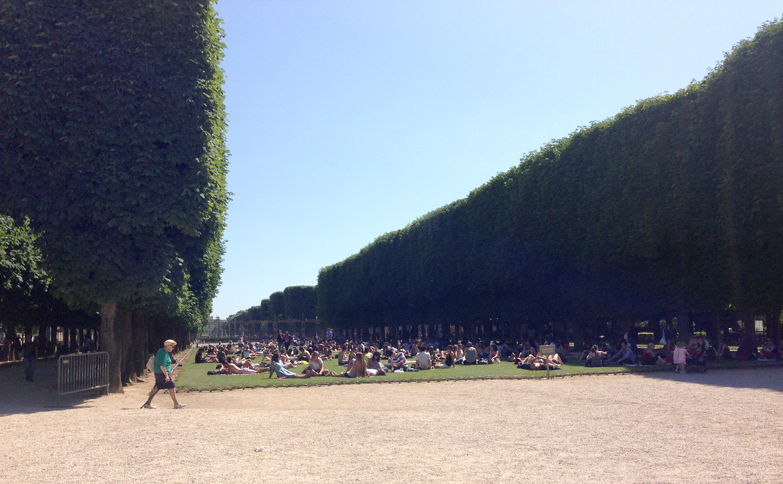
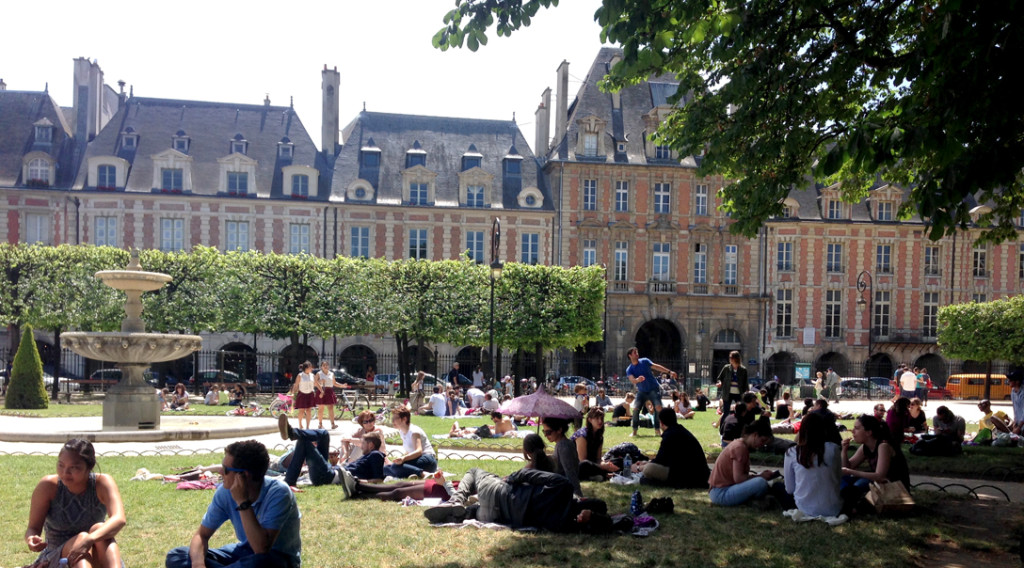
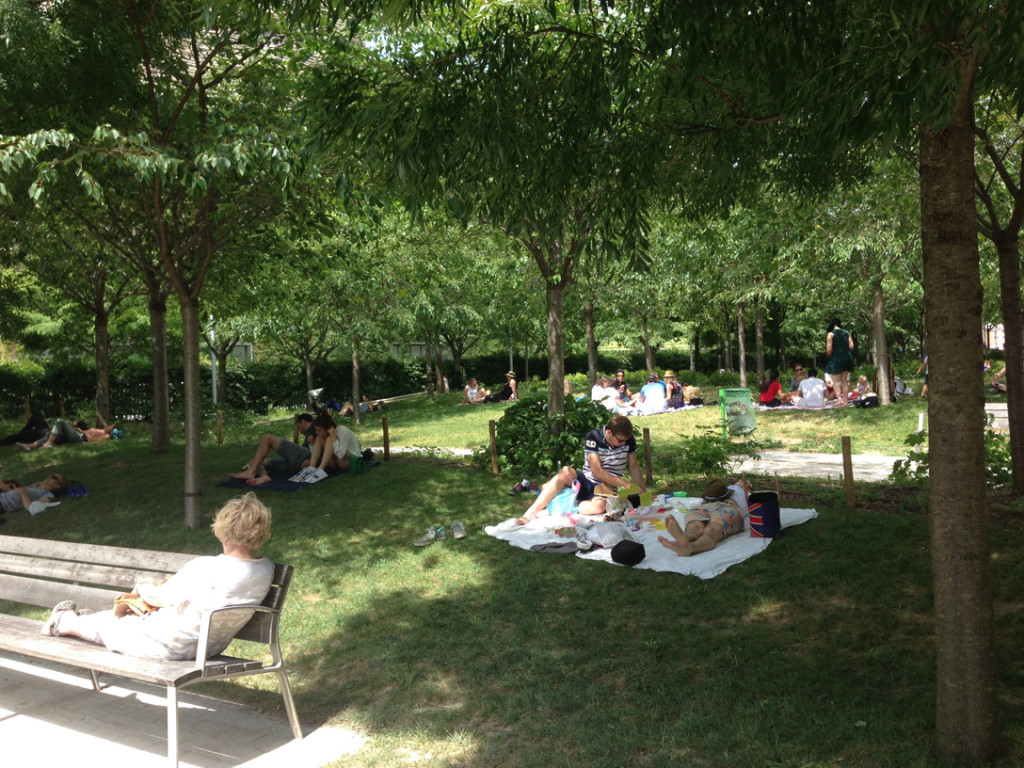
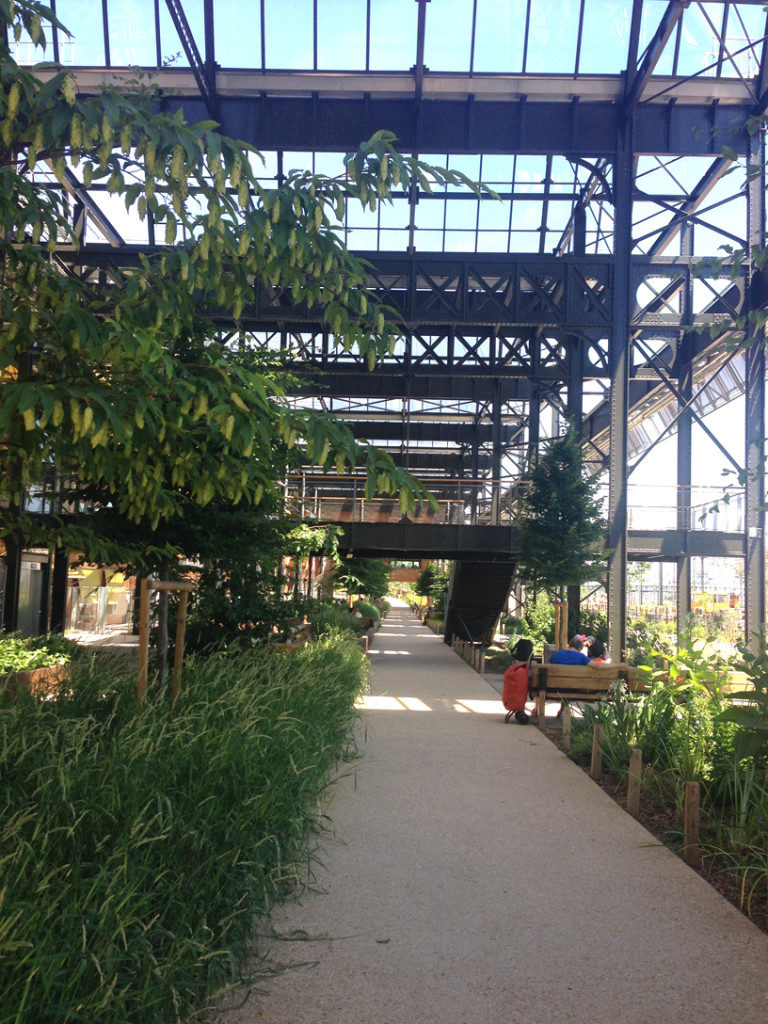
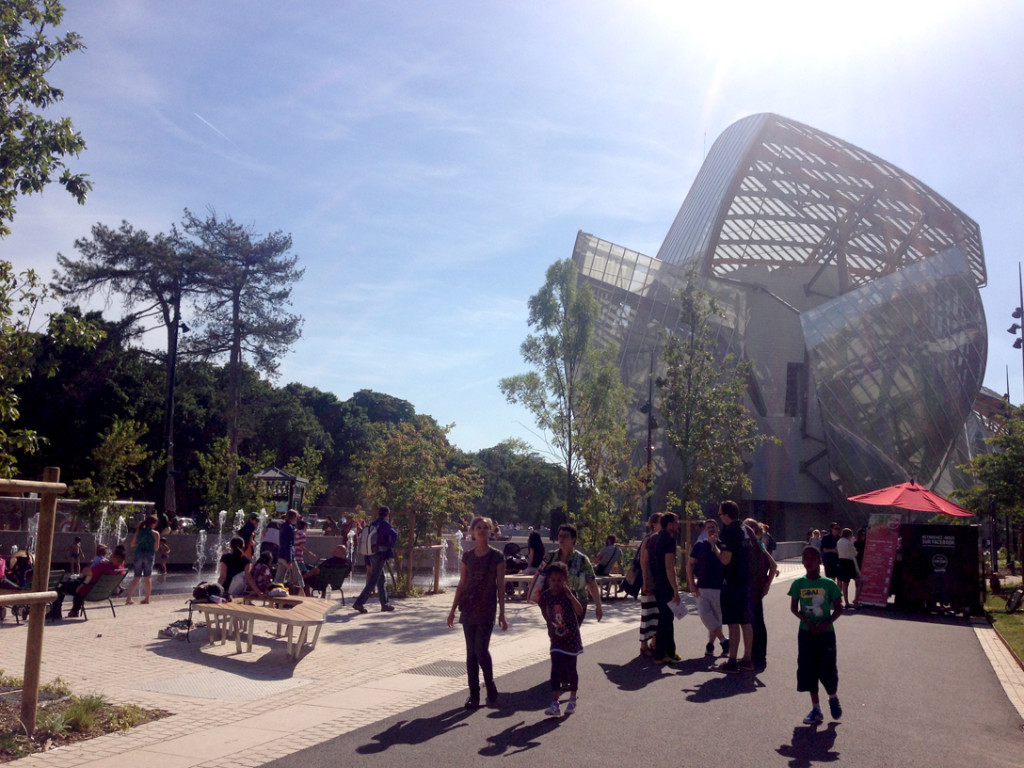
 [/one_half]
[/one_half]